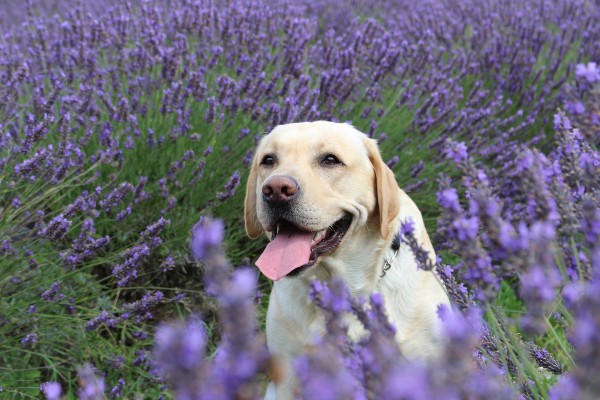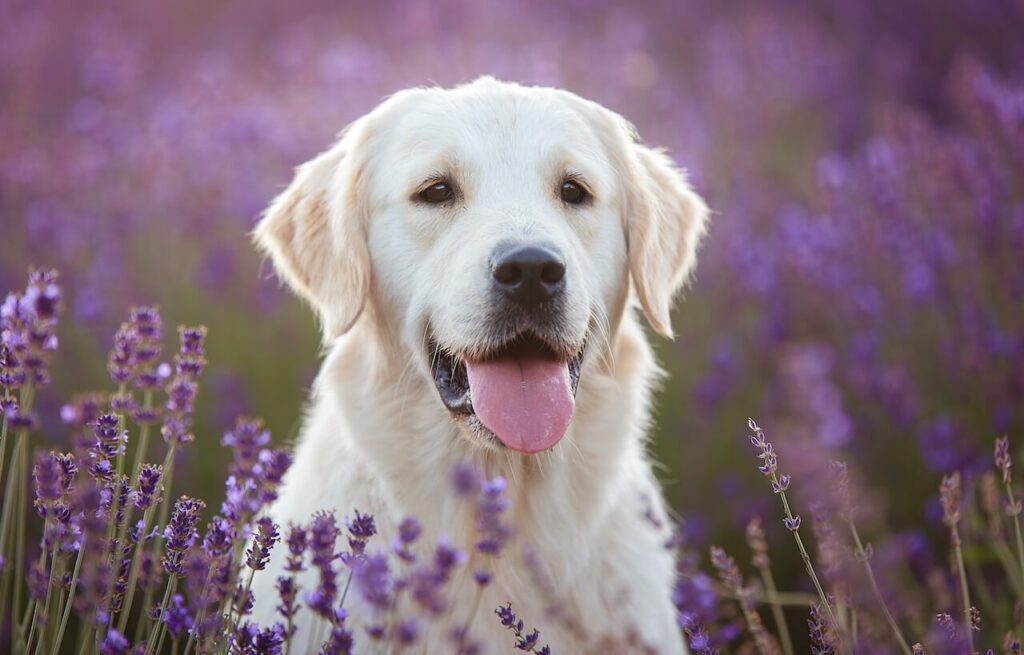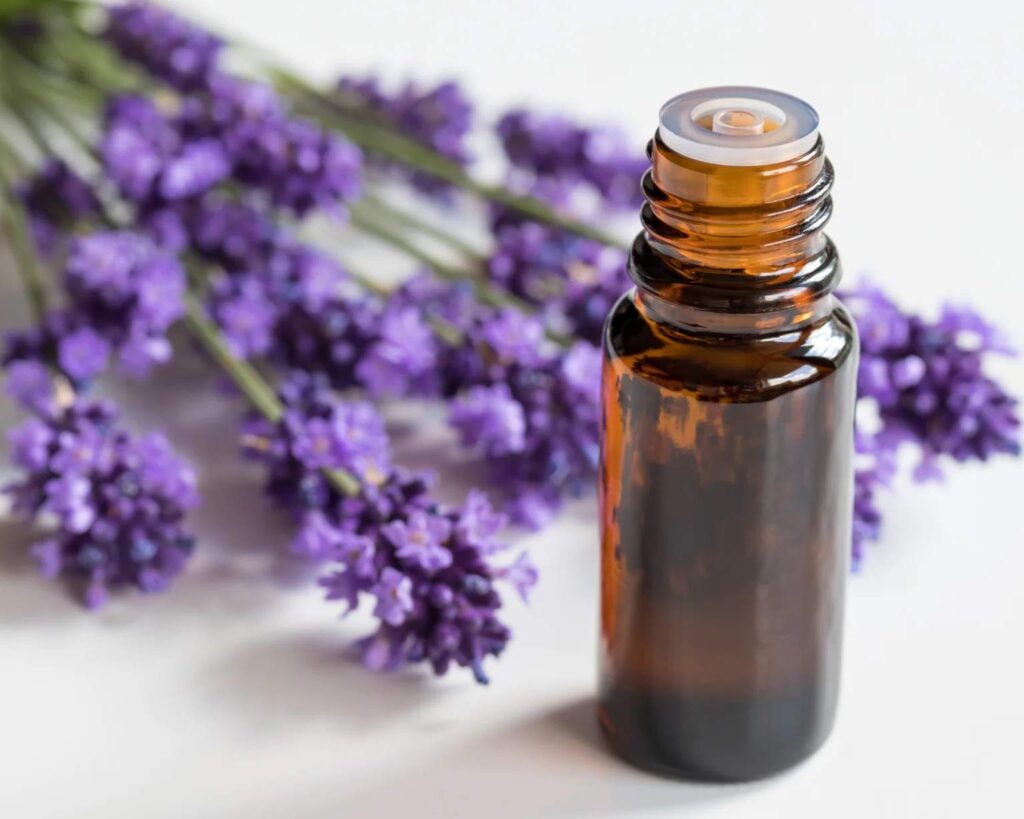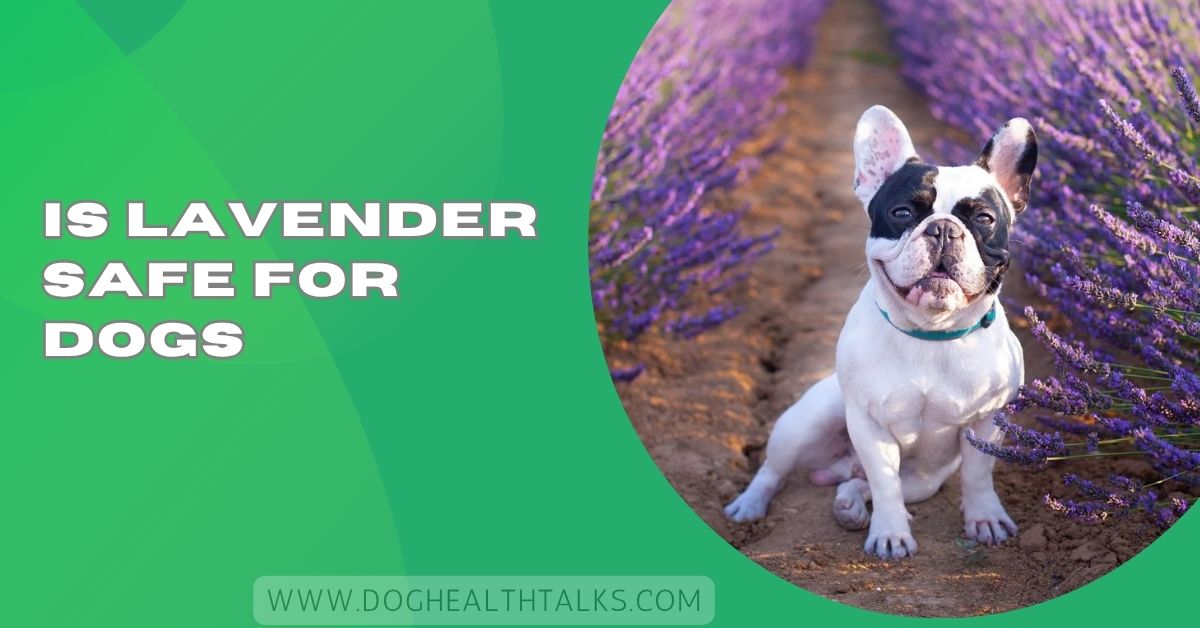Lavender is one of the most loved and calming scents in the world — known for bringing peace, balance, and relaxation. Many dog owners wonder if this soothing flower is also safe for their furry friends.
The good news is that Lavender is generally safe for dogs when used correctly. It contains small amounts of linalool, which can be toxic in large doses. Always use diluted lavender oil and avoid direct inhalation or ingestion for safety.
However, like anything natural, it must be used with caution. Understanding how to introduce lavender safely ensures your dog enjoys its calming effects without any risk or discomfort.
Lavender, one of nature’s most beloved plants, contains a small amount of a compound called linalool, which can be toxic to dogs if ingested in large quantities. However, when used properly — especially through aromatherapy — lavender is generally safe and even beneficial for dogs.
According to veterinary experts and research studies, lavender’s relaxing scent can reduce stress, ease anxiety, and promote calmness. The key is moderation and method.
- Safe Exposure: Gentle aromatherapy or diluted topical use.
- Unsafe Exposure: Direct ingestion, concentrated essential oils, or excessive contact with fresh lavender.
Dogs’ bodies process chemicals differently than humans. What’s soothing to us may overwhelm their systems if not used carefully. That’s why professional guidance is vital before adding lavender to your dog’s wellness routine.

When used safely, lavender can offer incredible holistic benefits:
- Calming effect: Reduces nervousness and hyperactivity.
- Promotes better sleep: Especially for anxious or restless dogs.
- Soothes during travel: Helps reduce car ride anxiety.
- Natural deodorizer: Adds a light, pleasant scent to your home environment.
While mild exposure is typically harmless, lavender poisoning can occur if your dog eats too much of the plant or licks concentrated essential oils.
Symptoms may include:
- Vomiting or drooling
- Lack of appetite
- Swollen stomach
- Difficulty defecating
- Fever or weakness
If you notice any of these signs, contact your veterinarian immediately. They may recommend treatments such as IV fluids, oxygen therapy, or antihistamines depending on the severity.
Here’s how you can keep the experience positive and safe for your pup:
- Diffuse safely: Use a diffuser in a well-ventilated room for short periods (10–15 minutes).
- Keep distance: Make sure your dog can leave the room if the scent feels overwhelming.
- Avoid direct application: Never apply undiluted lavender oil to your dog’s skin or coat.
- Choose pet-safe products: Always look for veterinary-approved essential oils.
- Ask your vet: Every dog is unique — what’s safe for one might not be for another.
Also Read: Can Dogs Eat Slim Jims – Vet-Approved Guide for Pet Owners
Lavender essential oil has long been used for its therapeutic effects on humans — and many of those benefits extend to our canine companions when used responsibly.
Studies suggest lavender aromatherapy can lower anxiety levels in dogs. In one 2006 study, dogs exposed to lavender scent during travel showed less movement and barking, indicating reduced stress.
Use a lavender diffuser in your dog’s relaxation area or apply a few diluted drops to their bedding to create a peaceful environment.
Just like humans, dogs can struggle with restlessness. A few drops of lavender oil (properly diluted) in their sleeping area can encourage deeper, calmer sleep, especially for dogs that suffer from separation anxiety.
Lavender oil has mild antiseptic properties. When diluted with a carrier oil such as coconut or jojoba, it may soothe mild skin irritation or bug bites. However, never use it without veterinary approval — and always perform a patch test first.
If your dog feels anxious during car rides, a light lavender scent in the vehicle can help. Avoid direct skin contact — simply let the fragrance fill the air gently.
A home that smells calm feels calm — for both humans and pets. Use lavender diffusers strategically to create an atmosphere of comfort and tranquility.

- Lavender can cause mild side effects if used in excess or improperly.
- Dogs may experience vomiting, drooling, or loss of appetite if they ingest too much.
- Skin irritation or itching can occur from direct contact with undiluted lavender oil.
- Lethargy or drowsiness might happen if the scent is too strong or used too often.
- Some dogs are sensitive to fragrances — always watch for sneezing or watery eyes.
- Always dilute lavender oil and use it for short periods in a ventilated space.
- Consult a veterinarian before regular use, especially for dogs with allergies or respiratory issues.
- Vomiting or nausea soon after ingestion.
- Loss of appetite or refusing to eat.
- Abdominal pain or bloating — your dog may appear restless or uncomfortable.
- Diarrhea or constipation, depending on how much was eaten.
- Lethargy or lack of energy.
- Drooling or pawing at the mouth due to irritation from the plant’s oils.
- Fever or weakness in severe cases of lavender poisoning.
- If any of these symptoms appear, call your veterinarian immediately for treatment advice.
Must Read: Can Dogs Eat Grapes? – Don’t Miss This Safety Guide!
Yes, dogs can safely smell lavender in small amounts. Gentle aromatherapy can help calm and relax them. Always keep the area ventilated and allow your dog to move away if the scent feels too strong or uncomfortable.
Lavender can be safe for a dog’s skin when properly diluted with a carrier oil. Never use pure lavender oil directly. Always test a small patch first and stop use if redness, itching, or irritation appears.
No, lavender plants are not safe for cats. They contain linalool, which can be toxic if eaten or inhaled in large amounts. Keep lavender plants and essential oils far from cats to prevent possible poisoning.
Lavender oil used in a diffuser can be safe for dogs if done carefully. Use only a few drops, limit diffusion time, and keep your home well-ventilated. Stop immediately if your dog sneezes, drools, or acts anxious.
Small amounts of dried lavender are generally safe for dogs to smell, but eating it can upset their stomach. Keep dried lavender in closed containers and away from curious pups who might chew or swallow it.
Yes! Lavender’s calming scent can help reduce stress, fear, or anxiety in dogs. Try using a diffuser or lavender-scented bed spray. Always monitor your dog’s reaction and stop use if any unusual behavior appears.
Lavender oil can be animal-friendly when used responsibly and in very small doses. Always dilute it, never allow pets to lick it, and consult your vet before use. Improper use can cause irritation or mild toxicity.

Yes, lavender oil can be used on dogs only when diluted properly. Mix with a safe carrier oil before applying. Avoid eyes, nose, and mouth areas. Consult your vet before using it regularly on your pet.
Lavender’s gentle properties may help calm minor skin irritation or itching. Always use a diluted mix and apply lightly. If the skin becomes red or swollen, stop immediately and contact your veterinarian for safer treatment.
You Should Know: Can Dogs Eat Watermelon? – Proven Benefits and Risks (2025)
Yes, some dogs can be allergic to lavender. Signs include sneezing, itching, watery eyes, or skin redness. Stop using lavender products if symptoms appear and talk to your vet about allergy-safe alternatives for your dog.
Lavender may interact with some calming or sedative medications. Always check with your vet before combining lavender aromatherapy or oils with prescribed treatments. Your vet can confirm whether it’s safe for your dog’s current plan.
Lavender in dog treats or shampoos can be safe if made for pets and used in moderation. Always choose trusted, vet-approved brands and read labels carefully. Avoid homemade products unless guided by your veterinarian.
Lavender plants are mostly safe to smell but not to eat. Ingesting leaves or flowers can cause vomiting, lack of appetite, or mild stomach upset. Keep lavender plants out of your dog’s reach, just to be safe.
Yes, dogs can safely smell lavender in small amounts. Always keep the area ventilated and watch for any irritation signs.
Yes, you can grow lavender safely. Just make sure your dog doesn’t eat the plant or chew its leaves or flowers.
Avoid tea tree, eucalyptus, peppermint, cinnamon, and citrus oils. These can cause irritation, breathing problems, or toxicity in dogs.
Scents like tea tree, pine, cinnamon, and citrus are harmful to dogs. Always use pet-safe oils in moderation only.
Yes, use a diffuser carefully. Keep it in a ventilated room and ensure your dog can leave if the scent bothers them.
Lavender, chamomile, and frankincense are gentle and safe scents for dogs when used properly in moderation and under vet guidance.
Dogs often enjoy lavender because its soft scent helps them relax, feel calm, and reduce anxiety during stressful or noisy situations.
Lavender can be a wonderful, calming addition to your dog’s life — when used with care. Its soothing scent may help ease stress, support better sleep, and create a peaceful home environment. However, because lavender contains small amounts of linalool (a compound that can be toxic in large doses), it’s important to use it safely. Always dilute essential oils, avoid direct ingestion, and monitor your dog’s reactions closely.
If your pup shows signs of discomfort or allergic response, stop use immediately and contact your veterinarian. Used properly, lavender can be a gentle, natural way to calm and comfort your furry friend while keeping them safe and happy.
